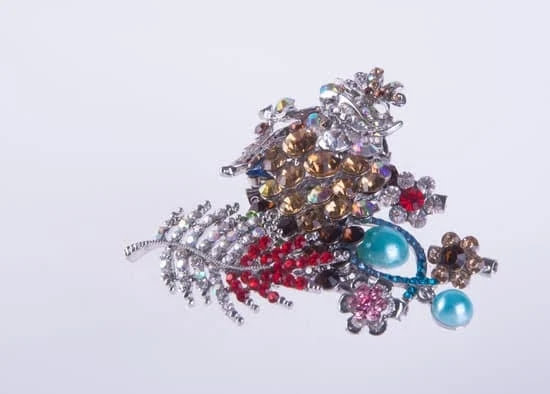Are you interested in learning how to sell fine jewelry on commission? The fine jewelry market offers a lucrative opportunity for sales professionals to showcase their expertise and earn substantial commissions. In this article, we will explore the key strategies for successfully selling fine jewelry on commission, from understanding the demand and trends in the industry to building lasting relationships with high-end clients and suppliers.
Understanding the fine jewelry market is crucial for anyone looking to sell jewelry on commission. We will delve into the current demand for luxury pieces, emerging trends, and customer preferences when it comes to high-end jewelry. By gaining insight into these aspects, sales professionals can better position themselves to meet the needs of their clients and maximize their earning potential.
Building knowledge in fine jewelry materials, gemstones, design, and craftsmanship is essential for effectively selling on commission. We will discuss how sales professionals can expand their expertise in these areas to confidently present and promote fine jewelry offerings. Additionally, identifying potential buyers and leveraging digital marketing will be critical components of this comprehensive guide aimed at helping individuals succeed in the competitive world of selling fine jewelry on commission.
Building Your Knowledge
Understanding Fine Jewelry Materials and Gemstones
To successfully sell fine jewelry on commission, it is crucial to have a deep understanding of the materials and gemstones used in these pieces. This includes knowledge of different types of metals such as gold, silver, platinum, and the various qualities and grades associated with them.
Additionally, understanding gemstones like diamonds, rubies, sapphires, and emeralds is essential. Being able to educate potential buyers about the quality, cut, color, clarity, and carat weight of these gemstones can add tremendous value to your sales pitch.
Appreciating Design and Craftsmanship
Appreciating the intricate design and exceptional craftsmanship that goes into creating fine jewelry is another important aspect of building your knowledge. Understanding different styles such as vintage, modern, minimalist, or ornate designs can help you cater to a wide range of customer preferences. Moreover, having insights into the craftsmanship techniques employed by different jewelry artisans can enable you to convey the level of skill and artistry invested in each piece.
Continuous Education and Training
To stay ahead in the business of selling fine jewelry on commission, one must engage in continuous education and training. Attending workshops, seminars or enrolling in courses related to gemology or jewelry design can provide valuable insights and keep you updated with industry trends. Building expertise in areas such as identifying hallmarks for authenticity or understanding market valuation processes can further enhance your ability to effectively sell fine jewelry on commission.
Identifying Potential Buyers
There are several strategies for identifying potential buyers and building relationships with high-end clients in the luxury jewelry market. Here are some effective approaches:
1. Attend High-End Events: Participate in exclusive events, galas, or fundraisers where affluent individuals gather. These gatherings provide an excellent opportunity to connect with potential buyers who have a penchant for luxury goods, including fine jewelry.
2. Join Luxury Networking Groups: Become a member of industry-specific associations or groups that focus on luxury lifestyles, fashion, or jewelry. These groups offer access to a network of potential clients and provide opportunities to build relationships with influential individuals in the luxury jewelry market.
3. Collaborate with Luxury Service Providers: Partner with upscale businesses such as high-end spas, boutique hotels, or private clubs where affluent clientele frequent. By establishing collaborations with these establishments, you can gain access to their client base and leverage their existing relationships to showcase and sell fine jewelry on commission.
In addition to these strategies, it’s essential to utilize digital platforms and social media effectively to expand your reach and connect with potential buyers interested in fine jewelry. Building a strong online presence through targeted advertising and engaging content can also be a valuable tool for reaching out to high-end clients in the luxury jewelry market.
Setting Up a Sales Presentation
When it comes to selling fine jewelry on commission, a crucial aspect of the process is setting up a compelling sales presentation. This includes crafting an irresistible pitch, showcasing the value of fine jewelry, and highlighting its unique selling points. Below are some key strategies for creating a successful sales presentation in the luxury jewelry market:
- Know Your Audience: Before setting up a sales presentation, it’s essential to research and understand the preferences and tastes of your potential buyers. Whether you’re targeting high-end clients or partnering with retailers, tailoring your pitch to their specific needs and desires will increase your chances of success.
- Highlight Quality and Craftsmanship: Emphasize the superior quality and impeccable craftsmanship of the fine jewelry you’re selling. Educating your audience about the materials, gemstones, and design elements will help them appreciate the value of each piece.
- Create an Emotional Connection: Fine jewelry often holds sentimental value for buyers. Incorporate storytelling into your presentation to evoke emotions and create a deeper connection with your audience. Whether it’s about the origin of the gemstone or the inspiration behind the design, storytelling can make a lasting impression.
Ultimately, a well-prepared sales presentation that effectively communicates the uniqueness and value of fine jewelry can significantly contribute to sales success when working on commission. By crafting an irresistible pitch and showcasing the compelling features of each piece, you can capture the attention and interest of potential buyers or retailers.
Additionally, incorporating visual aids such as high-quality photographs, videos, or even virtual reality experiences can further enhance your sales presentation by providing a more immersive and engaging experience for your audience. This multi-sensory approach can help potential buyers fully appreciate the beauty and intricacy of fine jewelry, ultimately leading to increased sales opportunities while working on commission.
Negotiating Commission Rates
When selling fine jewelry on commission, negotiating the right commission rates is crucial to maximizing your earnings. This process involves discussing the percentage of the sale that will be paid to you as the commissioned salesperson.
One key tip for negotiating commission rates with jewelry designers, retailers, or wholesalers is to emphasize the value you bring to the table. Highlight your expertise in the fine jewelry market, your ability to reach high-end clients, and your track record of successful sales.
It’s important to research industry standards and average commission rates for fine jewelry sales. This knowledge will give you leverage during negotiations and ensure that you are being fairly compensated for your efforts. Additionally, be prepared to discuss how you plan to promote and sell the jewelry, whether through in-person presentations, online platforms, or other marketing strategies. By demonstrating your proactive approach to selling their products, you can strengthen your position when discussing commission rates.
Another effective strategy for negotiating commission rates is to focus on building long-term partnerships with jewelry suppliers, retailers, or wholesalers. Emphasize your commitment to consistently promoting and selling their fine jewelry over an extended period.
This can lead to more favorable commission terms as they recognize the value of a reliable and dedicated sales partner. Overall, by effectively communicating your expertise, marketing strategies, and dedication to long-term success, you can negotiate competitive commission rates while selling fine jewelry on commission.
Leveraging Digital Marketing
Utilizing Social Media
Social media platforms such as Instagram, Facebook, and Pinterest have become powerful tools for promoting and selling fine jewelry. Utilize these platforms to showcase high-quality images and videos of the jewelry pieces you are selling on commission. Use engaging captions and relevant hashtags to attract potential buyers who are interested in luxury accessories. Additionally, consider collaborating with influencers or bloggers in the fashion and jewelry niche to reach a wider audience.
Exploring Online Platforms
Online marketplaces such as Etsy, Amazon Handmade, and even specialized jewelry platforms can be excellent avenues for selling fine jewelry on commission. Create compelling product listings with detailed descriptions and professional photographs to capture the attention of online shoppers. Take advantage of features such as customer reviews, product recommendations, and promotional offers to increase visibility and sales.
E-Commerce Strategies
If you have the capability, consider setting up your own e-commerce website or partnering with established online retailers to sell fine jewelry on commission. This allows you to have more control over branding, pricing, and customer interactions. Implement search engine optimization (SEO) strategies to ensure that your products appear prominently in search results.
Offer secure payment options and efficient shipping methods to provide a seamless purchasing experience for your customers. By leveraging digital marketing through social media, online platforms, and e-commerce channels, you can effectively promote and sell fine jewelry on commission while reaching a global audience of luxury enthusiasts.
Providing Excellent Customer Service
One way to provide excellent customer service in the fine jewelry industry is by offering personalized recommendations. Clients often look for expert advice and guidance when making significant purchases, especially when it comes to fine jewelry. By understanding their preferences, style, and needs, you can tailor your recommendations to match their individual taste, ultimately enhancing their shopping experience and increasing the likelihood of a sale.
Additionally, handling inquiries with professionalism is paramount in the luxury jewelry market. Clients may have specific questions about the materials used, the design process, or the craftsmanship of a particular piece. Being knowledgeable and responsive when addressing these inquiries can instill confidence in potential buyers and strengthen their trust in your expertise as a salesperson.
Another key aspect of providing excellent customer service is ensuring a seamless experience for clients throughout the purchasing process. From initial contact to post-sale follow-ups, every interaction should be conducted with the utmost care and attention to detail. This level of devotion to customer satisfaction can significantly impact your ability to sell fine jewelry on commission and secure long-term partnerships within the industry.
| Key Aspect | Description |
|---|---|
| Personalized Recommendations | Offer tailored advice based on client preferences |
| Handling Inquiries Professionally | Address client questions with expertise and responsiveness |
| Creating Seamless Experience | Ensure smooth interactions from initial contact through post-sale follow-ups |
Overcoming Challenges
Dealing with competition, price objections, and other obstacles is an inevitable part of selling fine jewelry on commission. In such a competitive market, it’s crucial to differentiate yourself and the products you represent in order to stand out. One of the key ways to do this is by understanding the unique value proposition of the jewelry you’re selling. Understanding its history, craftsmanship, and materials can set your offerings apart from those of competitors.
In addition to differentiating your products, building a strong reputation as a trustworthy and knowledgeable salesperson is crucial for overcoming challenges in selling fine jewelry. This involves showing genuine care for your clients’ needs and preferences and being able to address any concerns or objections they may have. Developing strong communication skills to effectively convey the value of the jewelry you are selling can help mitigate potential price objections.
Utilizing digital marketing strategies can also be instrumental in overcoming challenges while selling fine jewelry on commission. By leveraging social media platforms, online marketplaces, and e-commerce solutions, you can expand your reach beyond traditional brick-and-mortar stores. This allows you to connect with a wider audience and showcase the unique features of the fine jewelry you are representing. Embracing digital marketing tools will not only enhance your sales efforts but also help overcome geographical limitations.
| Key Strategies for Overcoming Challenges | Benefits |
|---|---|
| Differentiation through understanding unique value propositions | Stand out from competition |
| Showcasing genuine care and addressing objections | Build trust with clients |
| Leveraging digital marketing tools | Expand reach beyond local markets |
Maintaining Relationships
In conclusion, building a successful career in selling fine jewelry on commission requires a combination of expertise, networking, and excellent customer service. Understanding the fine jewelry market is essential, as it allows you to identify trends, customer preferences, and potential buyers. By gaining knowledge of materials, gemstones, and craftsmanship, you can effectively showcase the value of fine jewelry and negotiate competitive commission rates with designers, retailers, or wholesalers.
Networking and relationship-building are crucial in the luxury jewelry market. By reaching out to high-end clients and establishing connections with suppliers and retailers, you can secure consistent commission opportunities. Providing excellent customer service is also key to maintaining relationships with clients, offering personalized recommendations and ensuring a seamless experience.
Furthermore, leveraging digital marketing through social media and online platforms can expand your reach and promote fine jewelry to a broader audience. Overcoming challenges such as competition and price objections may be inevitable but staying updated with industry trends and continuously refining your sales pitch will help navigate these obstacles in the long run. Overall, sustaining long-term partnerships with suppliers, retailers, and clients is paramount for those looking to thrive in selling fine jewelry on commission.
Frequently Asked Questions
Is Selling Fine Jewelry Profitable?
Selling fine jewelry can be profitable if done right. The key is to carefully select high-quality pieces that will appeal to your target market, and to establish a strong brand and marketing strategy. Building trust with your customers and providing excellent customer service are also essential for success in this industry.
What Is the Average Markup on Fine Jewelry?
The average markup on fine jewelry can vary widely depending on the type of jewelry, the quality of materials, and the brand. Generally, the markup can range from 100% to 400% or more. However, it’s important for sellers to carefully consider their pricing strategy in order to remain competitive while still turning a profit.
How to Start Selling Fine Jewelry?
To start selling fine jewelry, you’ll first need to decide whether you want to sell online, through a physical store, or both. Next, you’ll need to secure reliable suppliers who provide high-quality pieces at fair prices. It’s also important to obtain any necessary licenses and permits for your business.
Additionally, creating an attractive and user-friendly website (if selling online) or setting up an appealing storefront (if selling in-person) will be crucial for attracting customers. Building relationships with potential customers through social media and other marketing channels can also help drive sales.

Welcome to my jewelry blog! My name is Sarah and I am the owner of this blog.
I love making jewelry and sharing my creations with others.
So whether you’re someone who loves wearing jewelry yourself or simply enjoys learning about it, be sure to check out my blog for insightful posts on everything related to this exciting topic!





